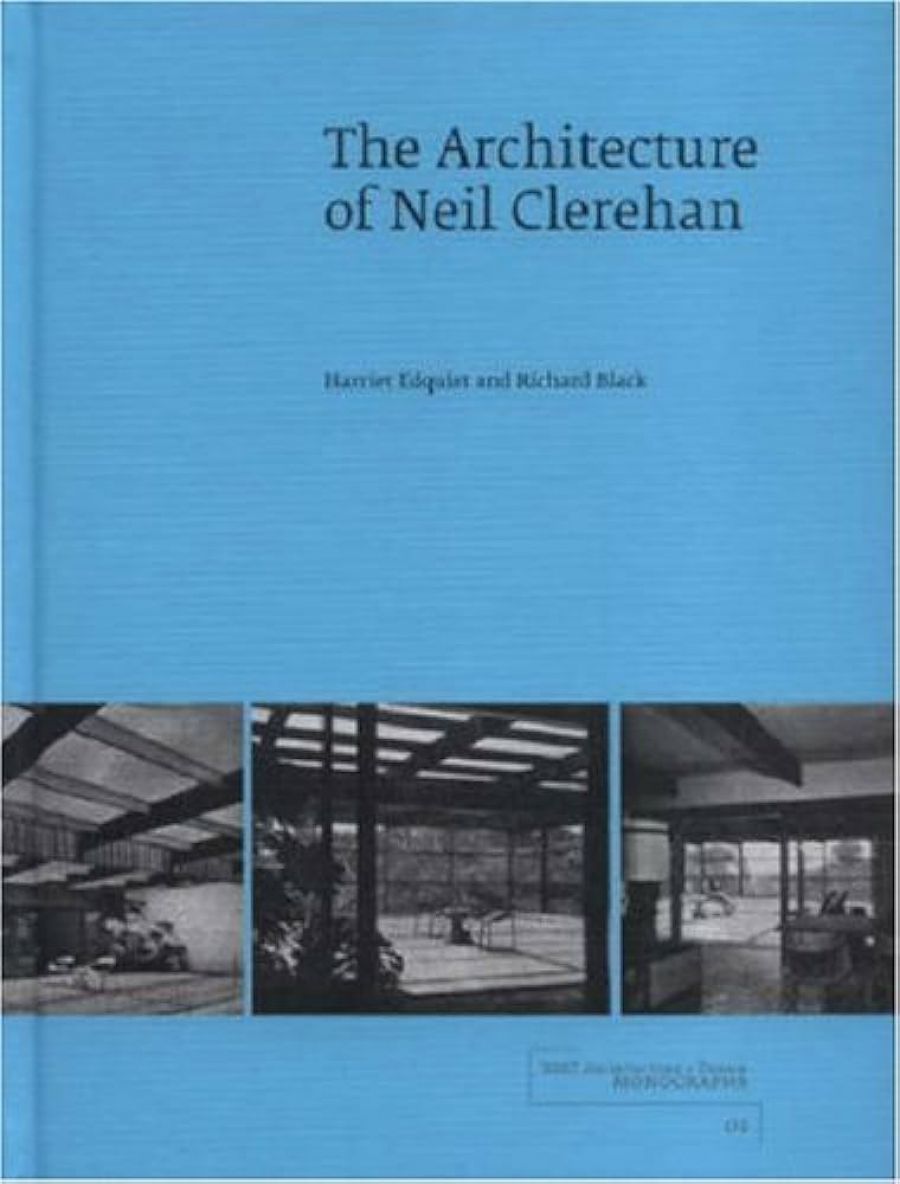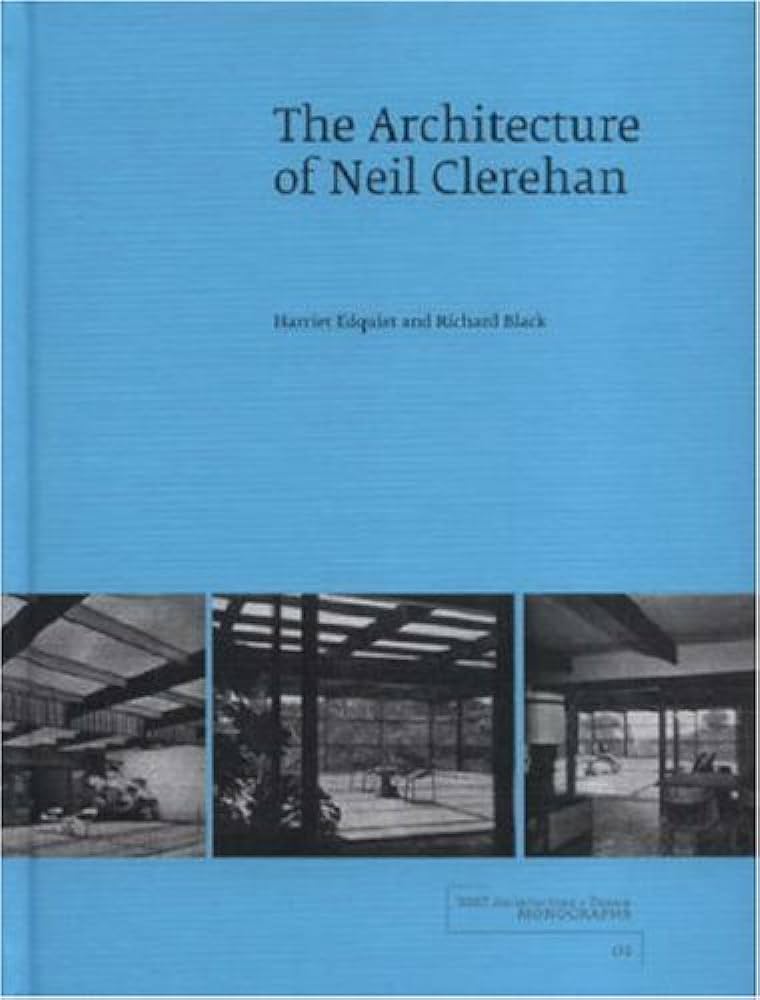
- Free Article: No
- Contents Category: Architecture
- Review Article: Yes
- Article Title: Trashing a living treasure
- Online Only: No
- Custom Highlight Text:
Melbourne architect Neil Clerehan counts among Australia’s living treasures. A practising architect for sixty years and documenter of the story of the city and its architecture, he holds more knowledge of who built what and how, and against what odds, than anyone else in town. He has written knowledgably, elegantly and consistently on architecture. As Philip Goad writes in his foreword to this book:
- Book 1 Title: The Architecture of Neil Clerehan
- Book 1 Biblio: RMIT University Press, $45 hb, 167 pp
- Book 1 Cover Small (400 x 600):

- Book 1 Cover (800 x 1200):

Neil Clerehan and Robin Boyd set up the offices of the Age and the Royal Victorian Institute of Architects’ Small Homes Service in 1947. Boyd was director of the Service until he went overseas; Clerehan succeeded him. Its aim was to offer, from a library of plans, architect-designed homes with the emphasis – post-World War II – on ‘small’. Prospective home builders could purchase the working drawings, specifications, schedules and a specially prepared Form of Contract for £5. Clerehan designed 130 of the houses offered by the Service, and this experience gave him a start in private practice that many architects would envy.
Each week, Boyd and then Clerehan promoted one of the designs in a half-page piece in The Age, and used the space to talk about new materials and new ideas being explored in housing, here or overseas. I still remember my mother, in bemused tones, reading us one of Clerehan’s articles in the kitchen; he wrote that a new machine to wash dishes had been invented that would surely free up the housewife for more interesting activities.
The Small Homes Service did what Merchant Builders did in a later decade: it offered a thoughtful and interested middle class access to well-designed housing at a reasonable price. The weekly Age article generated an interest in architecture that arguably formed the basis for Melbourne’s continuing interest in both its domestic and public roles.
The Architecture of Neil Clerehan is the first publication in RMIT’s School of Architecture + Design Monograph Series devoted to the promotion of Melbourne’s architecture and design history. The holding of the knowledge of our history is an important project, and it is therefore a deep disappointment that this book is a desperately poor tribute to such a luminary. Clerehan’s architecture and his contribution to how the non-architectural world understands contemporary architecture deserved a more nuanced investigation, one which expressed a real understanding of, and some passion for, the art form to which he has devoted his life.
This book contains three essays. The first, ‘A Melbourne Practice’, by Harriet Edquist, tells how Clerehan ‘[grew up] in Brighton in a comfortable brick villa in Drake Street’, and continues turgidly – with neither wit nor insight – to document his architectural education, his early work with Boyd, and his six decades of contribution to architecture and the written word. This lack of perspicuity frustrates the reader, desperate for some indication of the import of specific actions and developments.
Richard Black, in the second essay, ‘Living Patterns: The 1950s Housing of Neil Clerehan’, explores the organising principles investigated by architects in the development of new house designs and construction methods in a time of severe materials shortages. This reads more like a lecture than an essay, with Black asking the reader to compare different plans which are invariably placed on different pages and therefore not easy to compare. This approach could work if the images were positioned to support and illustrate the text. But here the reader’s involvement in Black’s discussion is not helped by the book’s design, which can only be described as appalling. The body of the text sits on the lower half of the page, while various Small Homes Service plans and perspectives by Clerehan are illustrated across the top half. The text rarely refers to the plans above it, and the minute type offers inadequate information in footnotes. It is messy and ultimately indecipherable.
While one hesitates to assume that a book on architecture should be a thing of beauty, fearful that the topic might be considered superficial, this book carries poor design to new depths. Not only are the images inadequately positioned to illuminate the words and enhance their meaning, but some plans are reproduced in reverse, and names are misspelt (including Robin Boyd’s). Apparently, no effort was made to re-photograph the houses; images from the 1950s and 1960s are used, which adds to the sense that this volume was produced on a shoestring, by people who did not care. No book from the country’s leading architecture school should be this bad.
The book’s most important contribution is the atlas to the Small Homes Service plans that forms the final section. The plans illustrated here offer an analysis of plan types which should be studied carefully by students, architects and builders working in the housing market, as our suburbs are in urgent need of the level of thinking that Clerehan has explored and demonstrated over a long career.


Comments powered by CComment